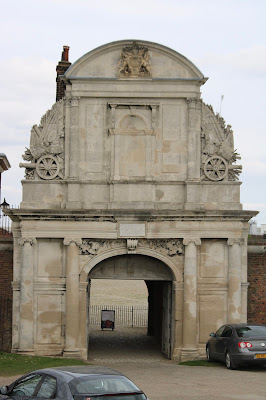Tilbury Fort
The fort time forgot, so did the planners
To get there meant working our way around the back street of the Tilbury wharf
With Oil Rigs in at the Docks
And Cruise Ships in port.
Inside the fort, Not a lot is still their.
This is an English Heritage Site of Course
But you can imagine what was once there.
It has seen many wars ..
And was built a long time ago
Some is very modern.
Inside the tunnels we found empty rooms
The old powder stores had been setup to show what was possible.
The food store of course were empty
An assortment of guns were on show.
But the Chapel had been restored.
Rumors have it a film was made here.
Still an English Heritage Site that need TLC.
















